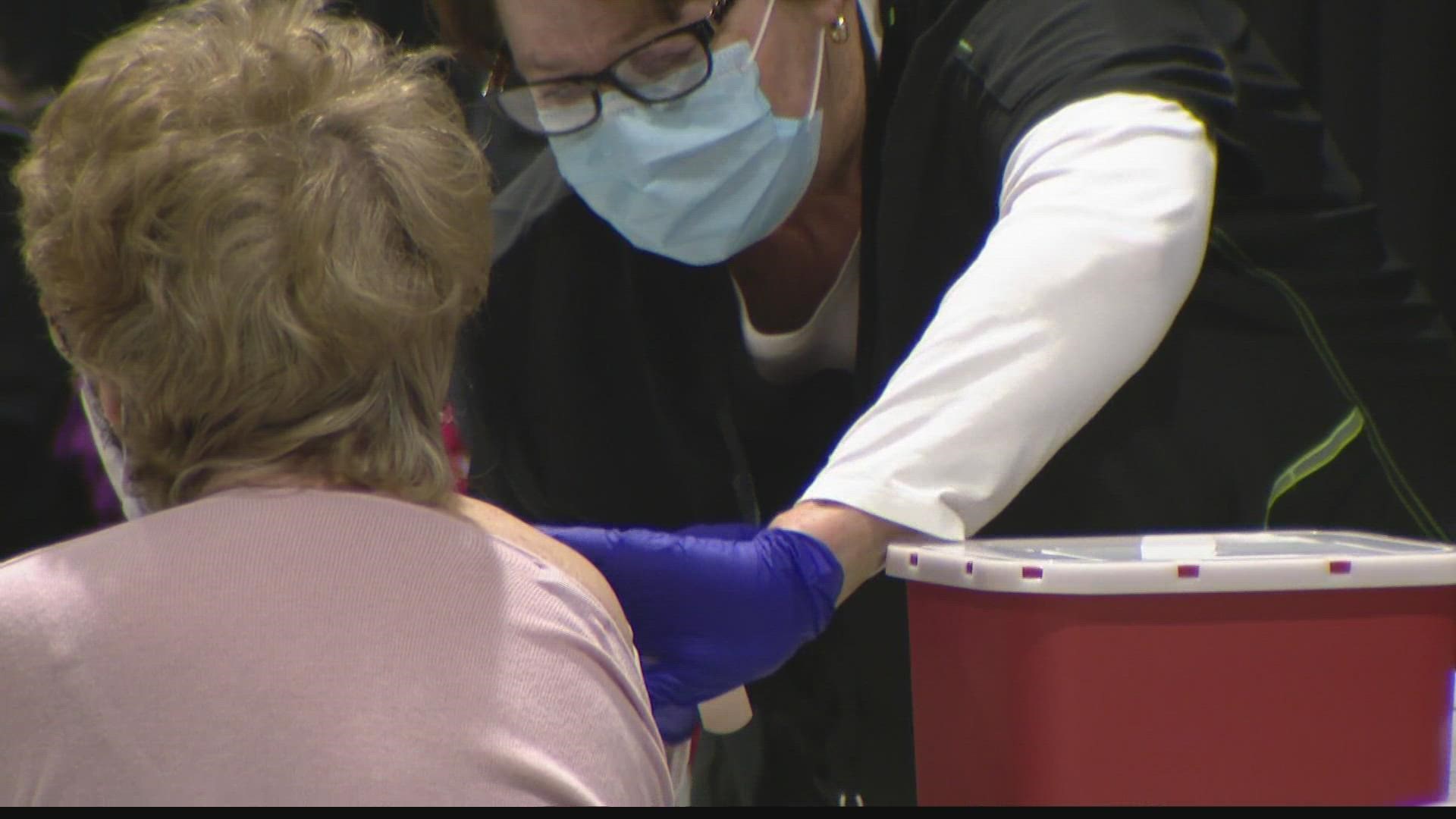INDIANAPOLIS — The omicron subvariant BA.2 now makes up the majority of COVID-19 cases across the country.
The new subvariant's rapid spread, first across Europe and now through the U.S., comes just as the nation's top health leaders approve another booster shot for adults 50 years and older.
On Tuesday, the Food and Drug Administration authorized a fourth dose of the Pfizer or Moderna vaccine for millions of Americans.
Hours later, the Centers for Disease Control and Prevention recommended the extra shot as an option but stopped short of urging that those eligible rush out and get it right away. That decision expands the additional booster to millions more Americans.
"When folks have been boosted, it does provide a higher level of protection against severe illness, hospitalization and death which is particularly important amongst our most vulnerable populations," said Dr. Christopher Doehring, vice president of medical affairs for Franciscan Health Central Indiana.
Doehring said vaccine protection and immunity from illness start to wane significantly after three to six months, so that second booster shot is a good idea for those at high risk. But, he said, if you just had the Omicron variant a month or two ago, you may want to hold off for now.
"Right now, we're holding up really well against the BA.2 and the other omicron variant," Doehring said.
CDC data shows the BA.2 omicron subvariant now makes up 54.9% of COVID-19 cases. But case numbers overall are still low compared to the omicron surge from months earlier, even as BA.2 quickly spreads.
"The severity of the illness doesn't seem to be quite as high as it has been with other variants, particularly the delta. But it does seem to have a high level of contagiousness. The good news is it has come onto the scene at a time when we have good widespread immunity from the omicron surge and the combination of those who've been vaccinated and those who've been boosted," Doehring said.
The BA.2 variant's dominance in the U.S. comes at a moment of relative calm two years into the pandemic, as many Americans are getting comfortable taking off masks and getting back to more normal routines.
Doehring said he's hopeful that as we continue to see more mild variants of COVID-19 emerge, it may indicate we're finally inching closer toward an endemic level with coronavirus.
"We are approaching a point where this is much more manageable. And certainly, we hope with future variants maybe that would emerge they would become more like normal and annoying coronaviruses as opposed to ones that have severe illness and death associate with them," Doehring said.
Per the CDC's updated recommendations, certain immunocompromised individuals and people over the age of 50 years old who received an initial mRNA booster dose at least four months ago are now eligible for another mRNA booster to increase their protection against severe disease from COVID-19.
For adults who received a primary vaccine and booster dose of Johnson and Johnson's one-dose COVID-19 vaccine at least four months ago, those people are now eligible to receive a second booster dose using an mRNA COVID-19 vaccine.

